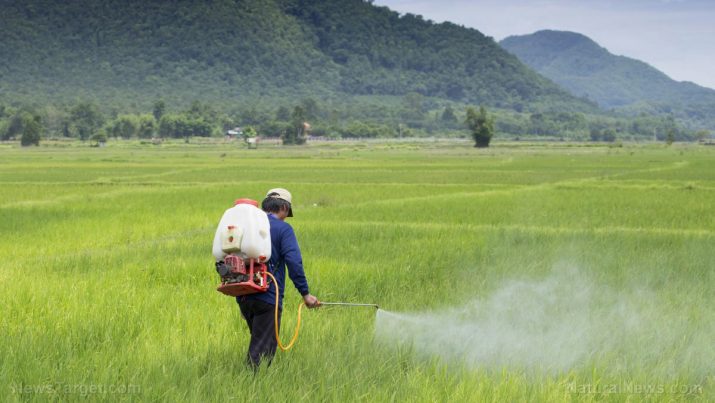
Cycloxydim — toxicity, side effects, diseases and environmental impacts
Friday, December 08, 2017 by Janine Acero
http://www.naturalpedia.com/cycloxydim-toxicity-side-effects-diseases-and-environmental-impacts.html

Cycloxydim is a post-emergence cyclohexene oxime herbicide characterized as a colorless and odorless solid in its pure active form. The technical compound is a yellow paste with a moderate aromatic odor. Cycloxydim inhibits the biosynthesis of fatty acids in plants.
Cycloxydim has a molecular formula of C17H27NO3S.

List of known side effects
As per the online chemistry database PubChem, cycloxydim is harmful when swallowed and inhaled, and can cause a mild conjunctival irritation through direct contact with the eyes. A safety data sheet notes that cycloxydim may irritate the skin and cause drowsiness or dizziness. Moreover, inhalation of the vapors and spray mist of cycloxydim may exacerbate the symptoms of those with chronic respiratory disease.
Cycloxydim is suspected of having damaging effects to fertility and the unborn child. It is moderately toxic to birds, honeybees, earthworms and aquatic invertebrates, with long-term effects.
Body systems affected by cycloxydim
Cycloxydim may adversely affect the eyes and skin. It may also affect the nose, throat and respiratory tract through aspiration and may damage the gastrointestinal tract through accidental ingestion. The highest residue concentrations of cycloxydim were detected in the liver and kidneys, as per experimental doses in animal tests.
Items that can contain cycloxydim
Cycloxydim is used for the control of grass weeds in pome fruits, stone fruits, grapes, strawberries, potatoes, carrots, celery, onions, tomatoes, peppers, cauliflower, Brussels sprouts, head cabbage, kale, Chinese cabbage, lettuce, spinach, green beans and peas, leeks, sugar beets, rice, dry beans and peas, oilseed rape, linseed, swede, sunflower, soybeans, rice and maize.
Products that contain cycloxydim as an active ingredient include:
- Focus 10 EC
- Laser
- Focus Ultra
- Stratos Ultra
Manufacturers that supply such products historically or actively include BASF, Greencrop and Teliton.
How to avoid cycloxydim
Avoid products that use cycloxydim as an active ingredient. Handlers, mixers and applicators of cycloxydim may be exposed to its fumes in the workplace. The following are some protective measures to avoid any contact with cycloxydim:
- Use this material only in well ventilated areas. In case of accidental aspiration, leave the area of contamination and go to an open area with fresh air. Seek medical attention immediately.
- Avoid contact with skin or clothing. Wear a protective suit, chemical-resistant gloves and safety footwear or safety gumboots. Remove any contaminated clothing item carefully. Rinse the contaminated part of the skin with soap and water.
- Do not get this material in your eyes. Wear goggles or a face shield. In case of contact, remove contact lenses (if applicable), then rinse with running water for several minutes. Seek medical help at once.
- Do not eat, drink or smoke near this substance. In case of swallowing any amount of cycloxydim, give plenty of water to drink. Refer for medical attention immediately.
- Refer to the workplace regulations regarding proper handling of equipment before applying chemicals.
Where to learn more
Summary
Cycloxydim is a post-emergence cyclohexene oxime herbicide. The pure active ingredient is a colorless and odorless solid, while the technical compound is a yellow paste with a moderate aromatic odor.
Cycloxydim inhibits the biosynthesis of fatty acids in plants.
Cycloxydim may adversely affect the eyes, skin, nose, throat, respiratory tract and gastrointestinal tract through prolonged or repeated exposure.
Sources include:
M.AGRO.BASF.co.za[PDF]
FAO.org[PDF]
Tagged Under: Tags: Cycloxydim





